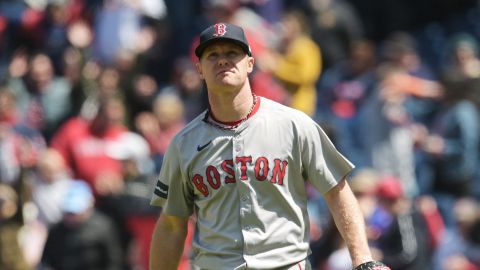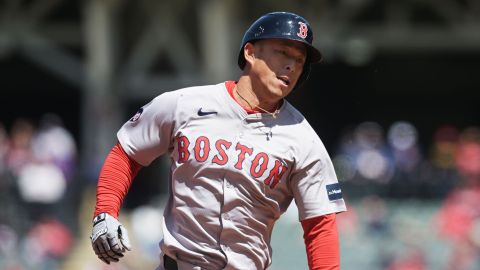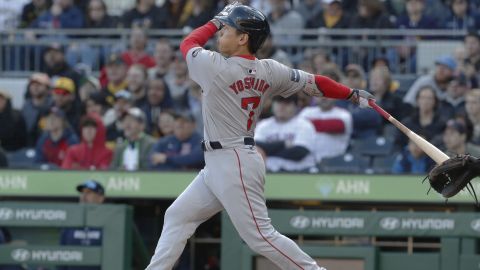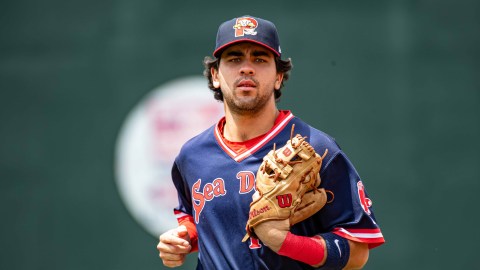FORT MYERS, Fla. – Each day that passes sees more Red Sox players trickle into the player development complex in Fort Myers. Soon enough, we will see them actually playing games and getting answers to the many questions we all have.
Until those games begin, some questions can be answered right here in the weekly edition of the mailbag. If you want to ask something for next week, just fire off an inquiry here or drop me a line on Twitter.
Here are some of the top questions this week:
1. Tony, all I've heard about possible lineups since the Adrian Gonzalez and Carl Crawford deals puts David Ortiz at fifth or sixth. Even at 32 home runs/102 RBIs /.270 average (after a terrible April) he has not been the same since Manny Ramirez was batting behind him. Wouldn't it benefit Ortiz and the team to slide him in at third or fourth and either Gonzo or Kevin Youkilis at his back. I see it as this: 1. Ellsbury 2. Crawford 3. Ortiz 4. Gonzalez 5. Youkilis 6. Pedroia 7. Drew 8. Saltalamacchia 9. Scutaro.
— Dan Stewart
Hey Dan. Interesting configuration you have there, and it certainly adds to the great lineup debates that have raged since the Red Sox picked up Gonzalez and Crawford in December. Certainly, many of us have pegged Ortiz for sixth in the lineup, including yours truly. I think your logic of placing him higher to get more production has merit, but let’s not forget that he was still very productive last season after that first month and doesn’t necessarily need a kickstart, especially if it comes at the expense of someone else.
In your scenario, that victim would be Dustin Pedroia, who bats sixth. Sometimes we get so lost in playing matchups and right-lefty alternations and everything else when we dream up lineup possibilities, but let’s remember that the primary purpose of keeping your best hitters near the top is to get them the most at-bats over the course of a season. Dropping a guy as vital as Pedroia would go against that logic.
Ortiz is a great hitter, but there are a handful of guys, including Pedroia, that you need to have higher up in this lineup. Making a move to get Ortiz going would make sense if he was your big dog, but he no longer is.
2. Will Tim Wakefield get to start 5-10 times this year?
— Fred Swan
We had a similar inquiry two weeks ago. I do think Wakefield will get a chance to make a few starts. It’s so rare for a rotation to go through a season without injury. Josh Beckett and Daisuke Matsuzaka had enough issues in 2010 to help Wakefield make 19 starts.
Terry Francona said Monday that Wakefield will be among roughly a dozen pitchers who will be stretched out through the course of spring training in order to get them prepared to start. Barring injury, he will start the year as the long man, but he’ll be first in line to get a start here and there.
3. I've read recently speed is not as much of a valued commodity, especially when referencing the Speed Score. I disagree: a fast player needn't steal 70 bases, but stretching a single into a double or beating out a double-play ball is invaluable and has not been properly measured. Plus, all Sox fans remember the impact of Dave Roberts. Do you think the Sox, with all their value placed on certain metrics, fundamentally subscribe to the Speed Score, or do they look non-measurable traits as well?
— One man is not a nation
One man, good question. I certainly am not privy to every spreadsheet on the desk of those in the front office, but I can let Terry Francona’s words speak a bit to that very subject. In discussing Jacoby Ellsbury and Crawford on Sunday, the skipper said: "Whoever leads off, you want a couple of things. One, speed's good. You want to score runs, you’ve got your best hitters coming up behind them. Getting on base is important. In my opinion, on-base percentage is more important than stolen bases. Sometimes your guys who can run are better off at the bottom of your order.
"We'll just try to use good judgment. If you have a guy leading off that can steal 70 bases, that’s a weapon. If he’s not getting one base, it’s not much of a weapon. Stolen base percentage more important than anything. I believe that … If we run smartly, it's way better and our guys know that. We don’t want to rein them in either. If we’re going to be fast, I would love to use it, but making outs on the bases doesn’t help you win."
That may not directly answer your question, but it does exemplify the thought process that goes into valuing successful steals and outs, or lack thereof, on the bases.
4. My question concerns the adjustments all the new players need to make to the Red Sox and vice versa. Won’t there be some sort of learning curve on both sides and how long does it usually take if even for a good player to get use to playing in Boston?
— Robbie
Robbie, solid question. I’m not sure you can put a definitive number on this as each guy is different. Some players completely shrink in a market like Boston. Others, like John Lackey, are perfectly able to perform but may need a year to make the full adjustment. Some just hit the ground running.
Certainly, experience helps out. A guy like Dan Wheeler, who is very familiar with the Red Sox and the rigors of the American League East, is the type of player who will have zero issues with such an adjustment. The same may go for his teammate in Tampa Bay, Crawford. On Monday, Wheeler was asked exactly what you asked me, so let’s allow his words to help us out here:
"That's where you want to be. You want to be at that team where you have your fans behind you like that. The passion, that’s the one thing I love about them. That’s something you get used to real quick.”
I think the one guy to keep an eye on in this regard is Adrian Gonzalez. It's not that he cannot handle it. He will. But he will be undergoing perhaps the biggest adjustment in terms of market, division, level of competition, expectations, etc.
5. How much playing time do you think Jason Varitek will get behind the plate?
— TJ
We should see plenty of Varitek this year. He figures to get the bulk of the starts against left-handers, and we’ve also seen him serving as the personal catcher for certain pitchers in the past, Josh Beckett being among them. Varitek looks to be in extremely good shape and is content with his role as the backup to Jarrod Saltalamacchia. Expect the captain to be a vital component to the 2011 Red Sox and to receive 60 starts or so.
6. Do you see Jonathan Papelbon being traded in a package (of maybe J.D. Drew/Ryan Kalish and/or Lars Anderson) for a right-handed hitter like Justin Upton? A right-handed outfielder can balance our left-handed strong lineup.
— Adam
Although there have been rumors of the Red Sox looking at other options as closer other than Papelbon, I do believe they are content with a loaded back end of the bullpen. With a bounce-back year in front of Daniel Bard and Bobby Jenks, Papelbon will be tough to part ways with in-season. On the other side of your inquiry, the balance in the lineup will be helped out by the presence of Mike Cameron and Darnell McDonald as spot starters and key reserves. OK, so they may not have the lure of a Justin Upton, but they do offer nice alternatives to Drew if a lefty is on the mound.
Your scenario makes some sense. Arizona has had a miserable bullpen and is in a rebuilding mode. Upton has been on the block. The Red Sox are heavy with left-handed hitters. However, parting ways with one component of what could be a dynamite bullpen for a youngster still due over $50 million is a risk, especially if you’re giving up a guy like Kalish who could be giving good numbers in a few years at a fraction of the cost.
7. Do you think the seven-year, $142 million contract given to Carl Crawford was too much, considering Crawford has never topped 200 hits in a season, has scored 100 runs once in the last five years? Also, Crawford doesn't walk much (32.5 avg. over nine seasons) and his career .337 on-base percentage are definite concerns.
— Questions, questions, questions
Questions, questions, questions had several inquiries this week, but I only chose one. Frankly, we needed a Crawford question, and this was as good as any.
Crawford's value goes a bit beyond some of the milestones and statistics you mention. For one, many of his years in Tampa Bay came when the lineup around him was pretty poor. Career numbers have to be taken with a grain of salt, and most project to improve when he is part of a loaded Red Sox roster. For instance, you mention a .337 OBP. Well, that number was just .326 through his first five seasons, but has been trending up ever since as the Rays have become a better team.
Also, you failed to take into account the fact that Crawford is one of the top base stealers in the game and may already be the best defensive left fielder the team has ever had, without even playing an inning. Twenty million dollars each year is a lot of money, for sure, but the Red Sox have seen Crawford change games against them for years. The complete package, even if it has yet to include a 200-hit season, may be worth it.



